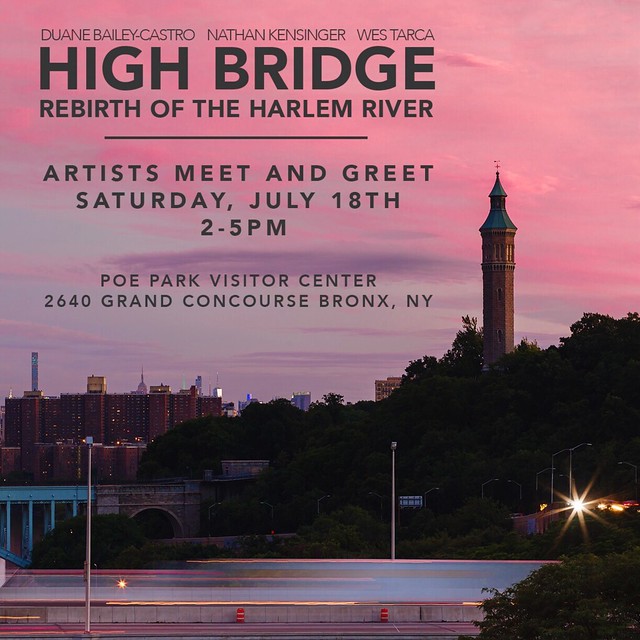Inwood: Substation No. 10
 June 30, 2009 -
June 30, 2009 -
The New York Central Railroad Substation No. 10 is a 79-year-old art-deco building on the northwest edge of Inwood, Manhattan. Located just steps from an active Amtrak line on the Hudson River, the substation is nestled between two Henry Hudson Parkway overpasses.
According to a study of the Harlem River done by Columbia University's Department of Historic Preservation, "the New York Central Railroad Substation was built in 1930 to provide electrical service for the trains on the NYCRR’s Hudson River line. The five-thousand-square-foot, two-room, brick structure is an example of the pre-Columbian style of Art Deco... employing motifs borrowed from Aztec and Mayan cultures..."
Substation 10 has been abandoned for decades, with graffiti and primitive wall drawings that date back to at least the 1980's. In 2003, an active squatter community was reported by the NY Times: "homeless people scurry in and out through the back windows of the structure... and leave years of clothes, mattresses and Chinese takeout containers scattered around the electrical equipment inside." Despite years of neglect, the interior of Substation 10 remained in remarkably good condition. Its massive power equipment, staircases and ventilation systems were rusty, but fairly intact.
The Department of Parks & Recreation began gutting Substation No. 10 earlier this June. Today, a sign out front explains the building is being "reconstructed to provide public restrooms" and "possible community use." Large dumpsters are slowly being filled with bricks and electrical devices stripped from the interior. No mention has been made of a reported proposal for an arts center with "an upscale Latino restaurant to be built on the top floor." Work is scheduled to be completed in Spring of 2010.
These photos are a last look at the old interior of Substation Number 10, and were taken shortly before its "reconstruction" began.



































